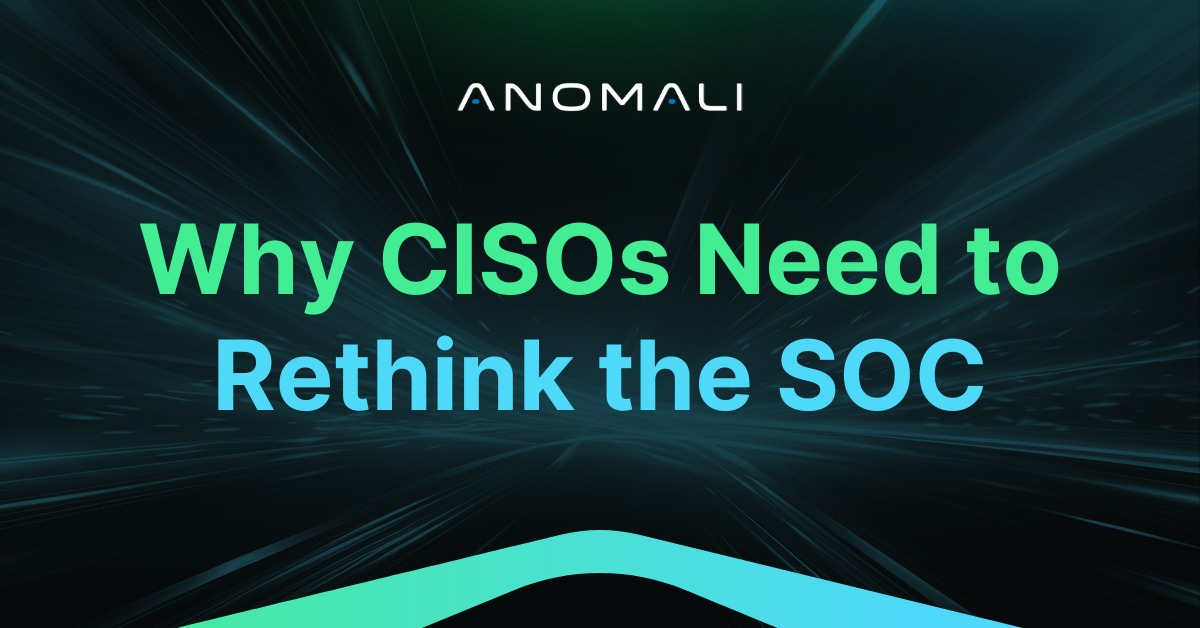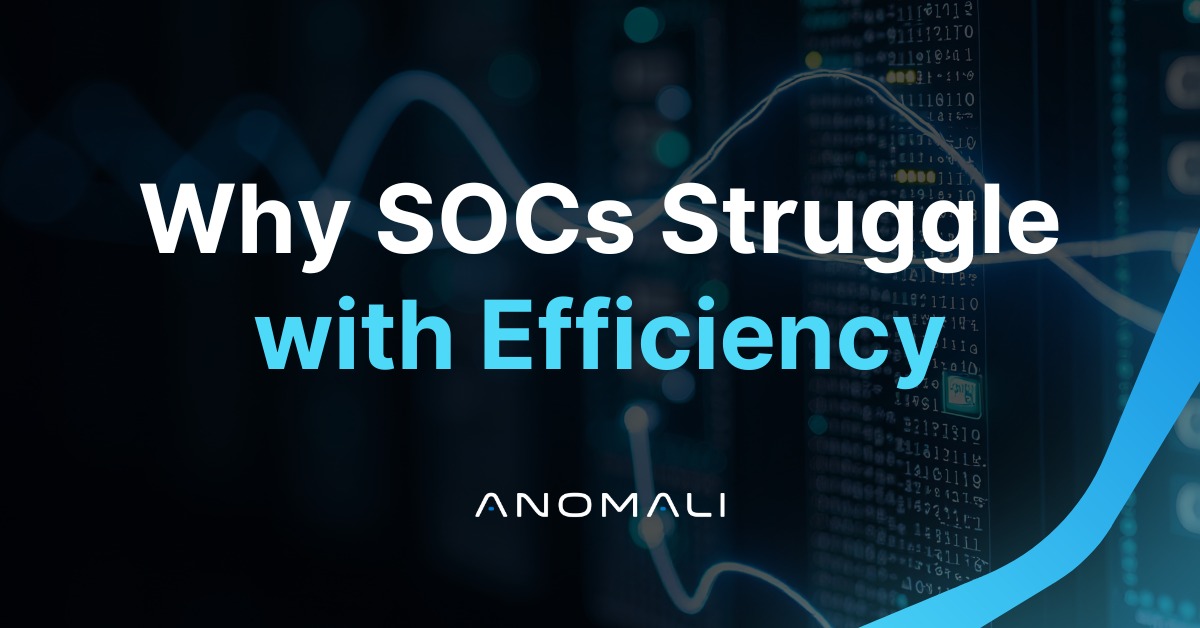Understanding the Differences and Similarities Between SIEM and SOAR
While SIEM and SOAR have distinct functionalities, they often work together to provide comprehensive threat detection, response, and management capabilities.


Security information and event management (SIEM) and security orchestration, automation, and response (SOAR) are two long-standing, critical technologies that play a vital role in enhancing the effectiveness of security operations. While SIEM and SOAR have distinct functionalities, they often work together to provide comprehensive threat detection, response, and management capabilities. As two of the most integrated tools used within a security operations center (SOC), SIEM and SOAR correlate with technologies such as threat intelligence platforms (TIPs) and user and entity behavior analytics (UEBA).
This blog explores the roles of SIEM and SOAR as standalone technologies, their complementary nature, some of the significant challenges and limitations security teams face when implementing these platforms, and the impact of artificial intelligence (AI) on SIEM and SOAR tools.
The Role of SIEM and SOAR in Security Operations
SIEM: The Heart of the SOC
The name “SIEM” is an amalgam of security information management and security event management technologies that the analyst firm Gartner mashed together in 2005. It went on to become a cornerstone of security operations for almost two decades.
SIEM technology collects and aggregates log data generated across an organization’s IT infrastructure, including servers, network devices, endpoints, and applications. The primary functions of a SIEM are:
- Log management: SIEM systems collect, normalize, and store log data from various sources, providing a centralized view of security events.
- Real-time monitoring and alerts: SIEMs analyze log data in real time to detect anomalies, suspicious activities, or potential security incidents. They generate alerts that notify security analysts of potential threats.
- Correlation and analysis: By correlating events from different sources, SIEMs identify patterns and relationships that may indicate the presence of a security incident. This could include correlating external threat intelligence with internal telemetry, an extraordinarily useful function.
- Compliance reporting: SIEMs facilitate regulatory compliance by providing audit trails, reporting, and documentation for standards like GDPR, HIPAA, and PCI-DSS. What was once a tedious two-week process has been reduced to a mere click.
SOAR: Automation and orchestration
SOAR platforms extend the capabilities of SIEM by automating and orchestrating security operations and their associated workflows. The main functions of SOAR include:
- Automation: SOAR automates the grind of repetitive and time-consuming tasks, such as incident response workflows, threat intelligence gathering, and log analysis, reducing the manual workload for already overburdened security teams.
- Orchestration: SOAR integrates with various tools in an operational security stack, enabling seamless communication and coordination between different technologies (e.g., firewalls, intrusion detection systems, endpoint protection).
- Incident response: SOAR platforms provide playbooks that guide security teams in responding to specific types of incidents, ensuring consistent and efficient response procedures.
- Case management: SOAR systems offer case management capabilities, allowing security teams to track and manage incidents from detection to resolution.
SIEM and SOAR as Complements
While SIEM focuses on data collection, monitoring, and correlation, SOAR adds automation, orchestration, and response layers, enhancing an organization’s ability to detect, analyze, and respond to security incidents more effectively. For example, when a SIEM system detects an anomaly and generates an alert, a SOAR platform can automatically initiate a predefined response workflow, such as isolating an affected endpoint, blocking a malicious IP address, or escalating the incident to a human analyst for further investigation.
Current Limitations of SIEM and SOAR
SIEM Limitations
- Volume of data: SIEMs collect and analyze massive amounts of data, which can lead to performance issues, storage costs associated with lookback periods, and scalability challenges. High data volumes or poorly tuned detection logic can also result in alert fatigue, where security teams become overwhelmed by the number of false positives. The signal-to-noise ratio is a significant problem.
- Complex configuration: SIEMs are complex and require significant effort to configure and tune. They rely on accurate, continuously updated correlation rules and a wide range of threat intelligence feeds to detect incidents quickly and effectively. Misconfiguration can lead to missed threats or an excessive number of false alarms.
- Lack of automation: Traditional SIEMs provide limited automation capabilities. Although they can generate alerts independently, they cannot typically automate incident response actions, requiring manual intervention from security analysts.
SOAR Limitations
- Integration challenges: SOAR platforms rely on integration with a wide range of security tools and technologies. Ensuring seamless integration and compatibility can be challenging, especially in environments with heterogeneous security stacks.
- Complex playbook design: Designing and maintaining incident response playbooks for SOAR platforms can be complex and time-consuming. Playbooks must also be updated regularly to adapt to evolving threats and routine changes in the IT environment.
- Dependency on high-quality data: SOAR effectiveness depends on the quality of data and alerts generated by SIEMs and other integrated tools. If the input data is noisy or inaccurate, SOAR automation may produce incorrect or ineffective responses.
Evolution of SIEM and SOAR: Integration with TIP and UEBA
TIP Integration
TIPs, such as Anomali ThreatStream, provide SIEM and SOAR systems with actionable threat intelligence from various sources, including open-source feeds, commercial and premium feeds, and internal proprietary data. By integrating TIPs with SIEM and SOAR, organizations can enrich alerts with contextual information, such as indicators of compromise (IoCs), tactics, techniques, and procedures (TTPs), and threat actor profiles. This integration enhances the accuracy of threat detection and accelerates the effectiveness of incident response.
Integration with UEBA
UEBA solutions analyze the behavior of users and entities within an organization to detect anomalies that may indicate insider threats, compromised accounts, or advanced persistent threats (APTs). When integrated with SIEM and SOAR, UEBA provides additional context and insights into suspicious activities.
For example, a SIEM alert for unusual login behavior can be correlated with UEBA data to determine if the behavior deviates from the user’s normal patterns. For example, a CFO logging in from North Korea at 3 a.m. might be unusual enough to set off your alarm bells and prompt you to investigate. Identifying similarly anomalous behavior improves threat detection accuracy.
The Role of Artificial Intelligence in SIEM and SOAR
Enhancing Threat Detection and Response
Generative AI (GenAI) solutions like Anomali Copilot are beginning to play an increasingly significant role in enhancing and accelerating the capabilities of SIEM and SOAR solutions. Next-gen SIEMs, such as Anomali’s Security Operations Platform (driven by Anomali Copilot), include SIEM, SOAR, TIP, and UEBA capabilities. They can quickly analyze massive volumes of log data more efficiently (searching petabytes of data in mere seconds), identify subtle or highly nuanced patterns, and dramatically reduce false positives.
Anomali’s use of multiple machine learning (ML) algorithms and large language models (LLMs) enables SOCs to quickly adapt to new and evolving threats, improving the accuracy and effectiveness of threat detection and remediation.
Automating Incident Response
SOAR capabilities, such as those included in Anomali’s SecOps Platform, can now automate incident response processes by analyzing incident data, predicting potential threats, and executing predefined response actions in seconds. Anomali Copilot can also prioritize incidents based on severity and potential impact, enabling security teams to focus on the most critical threats. This level of automation and intelligence not only takes pressure off overburdened support staff — it also significantly reduces response times and minimizes the impact of security incidents.
Predictive Analysis and Proactive Defense
Copilot uses multiple AIs and LLMs, enabling predictive analytics that SIEM and SOAR systems can use to anticipate potential threats in the early stages of infestation. By analyzing historical data and contextualizing it to current trends, Copilot enables SOCs to forecast future attack vectors and potential areas of exposure, enabling organizations to implement proactive defense measures and strengthen their security posture.
Three Key Initiatives for Maximizing Security Posture
1. Implement Comprehensive Integration Strategies
Organizations should focus on integrating SIEM and SOAR with other security technologies, such as TIP, UEBA, endpoint detection and response (EDR), and network monitoring tools. This integration ensures a holistic view of the security landscape, enabling better and more nuanced threat detection, faster analysis, and a more comprehensive response. Developing a security stack that supports a unified SOC will leverage data from multiple sources, enhance situational awareness, and accelerate and streamline incident management. The Anomali Security Operations Platform does just that.
2. Leverage AI and Machine Learning Capabilities
If they have not yet, organizations should invest quickly in AI and machine learning technologies to maximize the effectiveness of SIEM and SOAR. The volume of threats is increasing exponentially. More importantly, bad actors — unconstrained by rules of engagement — are already making liberal use of AI. Adding AI to the “good” side of the equation enhances the ability to detect complex threats, reduce false positives, and automate response actions.
Security teams should be hardwired to continuously train AI models using up-to-date threat intelligence and data to adapt to evolving attack techniques. As with every other part of a SOC, incorporating AI-driven analytics into a SOAR-driven security workflow improves threat detection, response speed, and accuracy. This is exactly what Anomali Copilot delivers.
3. Develop and Maintain Incident Response Workflows
Organizations should develop comprehensive and automated incident response workflows tailored to their unique threat landscape and operational environment. The data sources for these workflows should be regularly updated to reflect new threats, vulnerabilities, and changes in the IT infrastructure.
By standardizing response procedures and automating execution through SOAR platforms, organizations can ensure a consistent and efficient approach to handling security incidents. Regular testing and simulation exercises can validate the effectiveness of incident response methodologies, identifying those that need refining. As part of its Security Operations Platform, Anomali provides analysts with automation and tools to perform investigations, triage, eradication, containment, and blocking, making traditional playbooks obsolete.
Anomali’s Approach to Security Operations
SIEM and SOAR are essential components of modern security operations, each playing a unique role in threat detection, analysis, and response. While SIEM provides the foundation for monitoring and correlating security events, SOAR extends these capabilities by automating and orchestrating response actions. Integrating SIEM and SOAR with TIP, UEBA, and AI technologies — as seen in solutions such as the Anomali SecOps Platform — further enhances their effectiveness, providing a more comprehensive and proactive approach to cybersecurity.
As cyber threats continue to muscle up, organizations must adapt by leveraging advanced technologies and implementing robust security strategies. Security experts can maximize security posture and protect their organizations from increasingly sophisticated attacks by focusing on integration, AI adoption, and developing effective incident response playbooks. The future of cybersecurity lies in the seamless collaboration of SIEM and SOAR, powered by AI and enhanced by continuous improvement in threat intelligence and behavior analytics.
Ready to discover how Anomali’s AI-Powered Security Operations Platform can transform your organization’s security posture? Request a demo.
Discover More About Anomali
Get the latest news about cybersecurity, threat intelligence, and Anomali's Security and IT Operations platform.
Propel your mission with amplified visibility, analytics, and AI.
Learn how Anomali can help you cost-effectively improve your security posture.




